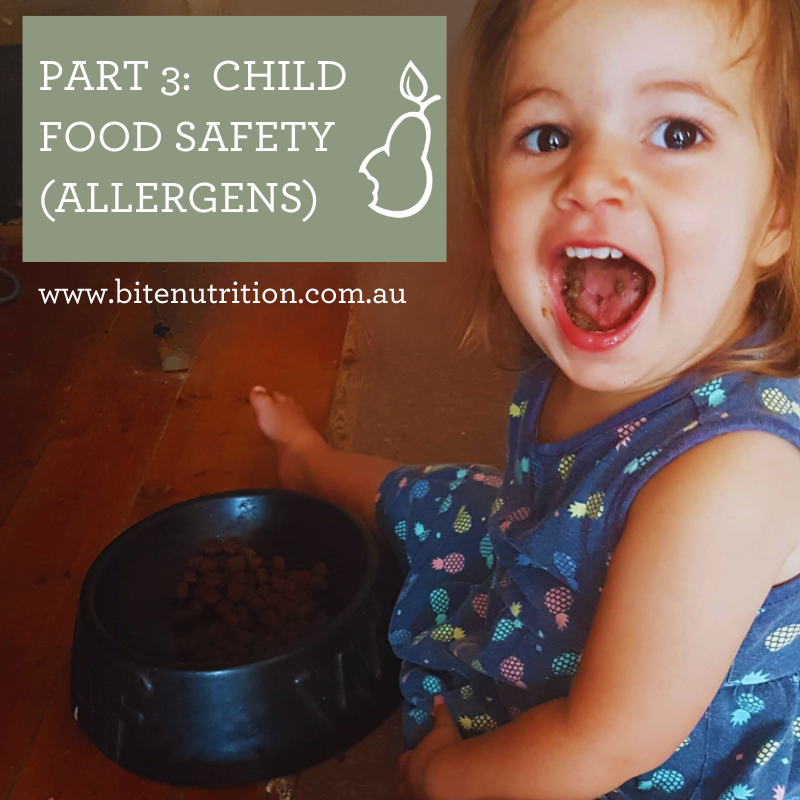Part 3: Child Food Safety - Allergens

Allergies and intolerances
There are many reasons why children may have an adverse reaction to a food. The cause of a reaction may be an allergy or intolerance to that food.
What are food allergies?
Food allergies are caused by a reaction of the immune system to a protein in a food. The most common sources of food allergy in children under five years old are cow’s milk, soy, eggs, peanuts, tree nuts, wheat, sesame, fish and shellfish. Food allergies occur in around one in every 20 children, and some of these allergies are severe.
Symptoms of an allergic reaction are usually immediate and can include hives or a rash on the skin; swelling of the lips, tongue or mouth; vomiting; diarrhoea; or difficulty breathing. Severe allergies can lead to an anaphylactic reaction, where breathing becomes extremely difficult and can cause loss of consciousness and serious injury or death. If you suspect your child has a food allergy, talk to your doctor, who may recommend allergy testing.
What is food intolerance?
In cases of food intolerance, reactions are usually less severe. Symptoms of food intolerance can include headaches, skin rashes and stomach upsets. If you notice that your child is experiencing these symptoms after eating, it is a good idea to talk to your doctor. Your doctor can help with diagnosing the symptoms, to find out whether they are related to dietary factors.
Allergy Foods
It is important to introduce a wide variety of foods and fluids from 6 months of age, even to those children with high allergy risk[1]. Restrictive eating can lead to unintended challenges later.
A baby is at higher risk if:
- A parent or sibling has current allergic disease, or a history of allergic disease (this includes food allergy, asthma, eczema, allergic rhinitis).
- The child has moderate to severe atopic dermatitis or developed early onset severe eczema (within the first 3 months of life).
Allergen foods such as cow’s milk, nuts in the form of paste, cooked eggs, fish, wheat in bread, pasta etc are all important to introduce in small amounts from 6 months. Research suggests that even in babies with severe eczema, that introducing peanuts in the form of paste before 12 months can prevent peanut allergy later in life by as much as 80%.[2][3]
Try to introduce allergen foods one at a time, so you can monitor more closely if your baby has any reactions to it. Introduction should be in small amounts and then a slow increase. For more detail on introducing solids with allergens in mind, read our article addressing just this.
[1] Nip Allergies in the Bub - A Food Allergy Prevention Project (preventallergies.org.au)
[2] Du Toit G. Effect of avoidance on peanut allergy after early peanut consumption. N Engl J Med. 2016
[3] Du Toit G, Roberts G, Sayre PH, Bahnson HT, Radulovic S, Santos AF, et al. Randomized trial of peanut consumption in infants at risk for peanut allergy. New England Journal of Medicine. 2015;372(9):803-13.

